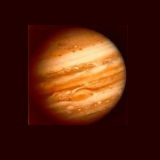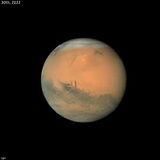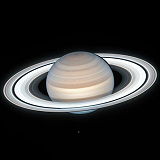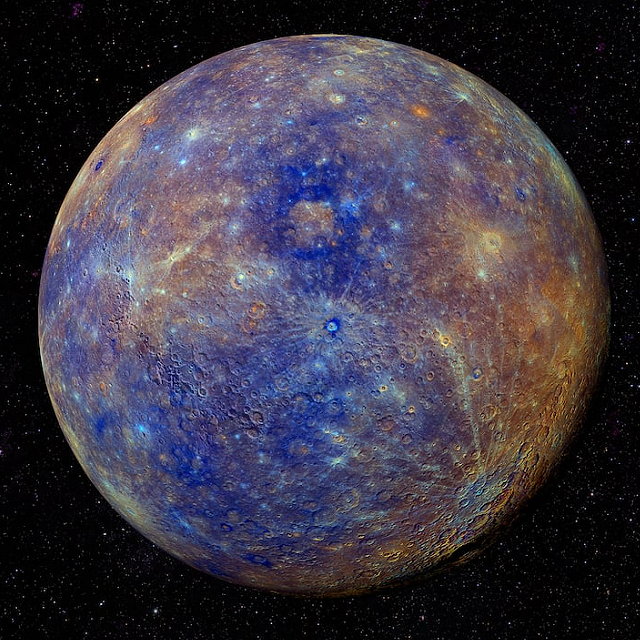
|
Mercury Solar System Last Updated: 12/21/2024 |
| Mercury is the smallest planet in the Solar System and the closest to the Sun, with a diameter of about 4,880 km. It has a dense metallic core, constituting roughly 75% of its volume, and a thin silicate crust23. Mercury's surface is heavily cratered due to impacts over billions of years, featuring notable formations like the Caloris Basin34. | |
| Mercury has no moons or rings and experiences extreme temperature fluctuations. A day on Mercury lasts about 176 Earth days, while it completes an orbit around the Sun in just 88 Earth days | |
Website Wikipedia Facebook
World » Wrd
Place » Space

|
Jupiter Place » Space Jupiter is the largest planet in the solar system and the fifth planet from the sun. The gas giant has a long, rich, history of surprising scientists. Jupiter has 79 moons and is known as the 'king of the planets'. Jupiter orbits the Sun at a distance of 5.20 AU (778.5 Gm) with an orbital period of 11.86 years. 33 views 💖 1Jupiter |

|
Mars Place » Space Mars is the fourth planet from the sun and has a distinct rusty red appearance and two unusual moons. The Red Planet is a cold, desert world within our solar system. It has a very thin atmosphere, but the dusty, lifeless planet is far from dull. The surface of Mars is orange-red because it is covered in iron oxide dust, giving it the nickname "the Red Planet". 33 views 💖 1Outer Space |

|
Saturn Place » Space Saturn is the sixth planet from the Sun and the second-largest in the Solar System, after Jupiter. It has a whopping 145 moons. It's the farthest planet from Earth that's visible to the unaided eye, but the planet's most outstanding features — its rings — are better viewed through a telescope. It is a gas giant with an average radius of about nine-and-a-half times that of Earth. 33 views 💖 1Universe |

|
Bennu Place » Space 101955 Bennu is a carbonaceous asteroid in the Apollo group discovered by the LINEAR Project on 11 September 1999. It is a potentially hazardous object that is listed on the Sentry Risk Table and has the highest cumulative rating on the Palermo Technical Impact Hazard Scale. Bennu has a 1 in nearly 1,800 chance to hit Earth in the next 300 years. 41 views 💖 1Universe |
